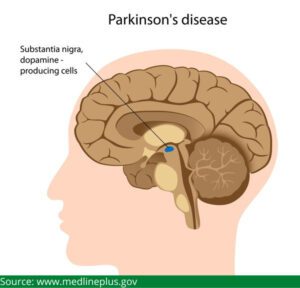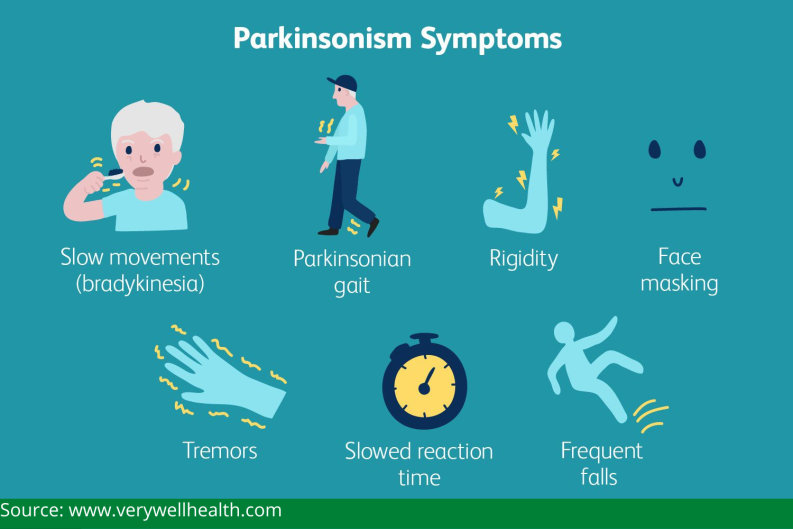Parkinson’s disease (PD) is the 2nd most common neurological condition in people aged over 60. Studies have shown that PD increased more than twofold over the last 3 decades globally, from less than 3 million in 1990 to over 6 million patients in 2016 and more than 10 million people globally in 2020.
Estimates from 2016 show that India had roughly 0.58 million people living with Parkinson’s disease, with a significant increase in prevalence projected in the following years. In 2019, approximately 0.77 million people were diagnosed with Parkinson’s disease in India.
According to Dr. Gurneet Sawhney, a top-notch brain specialist in Mumbai, people with PD can still have a decent to excellent quality of life with the help and support of their loved ones. Dr. Gurneet Sawhney is known for his strong foundation in neurotrauma and minimally invasive surgery.
This article is about Parkinson’s disease and how Deep Brain Stimulation (DBS) can benefit PD patients.
What is Parkinson’s disease?
Parkinson’s disease is a neurological condition that causes tremors, stiffness, and difficulty walking, coordinating, and balancing.
Symptoms of Parkinson’s disease usually appear gradually and worsen over time. People with Parkinson’s disease may have difficulties walking and speaking as the disease develops. They may also have behavioral and mental changes, sleep issues, depression, memory problems, and exhaustion.
Parkinson’s disease can affect both males and women. However, men are affected by the condition more than women.
Dr. Gurneet Sawhney, a renowned brain surgeon in Mulund, says that although there is no cure for Parkinson’s disease currently, treatments can help you manage your symptoms and sustain the quality of your life.
How can someone get Parkinson’s disease?

When neurons die or become damaged, they generate less dopamine, resulting in Parkinson’s movement issues. Scientists are still unsure what causes dopamine-producing cells to die.
Several factors are known to play a role in the development of Parkinson’s disease, including:
- Age
- Genetic, passed down from parents
- Damage caused by free radicals
- Exposure to chemicals
Because the symptoms of Parkinson’s disease are usually mild in the early stages, you may not require treatment.
However, you may need to see your specialist frequently to monitor your condition.
What are the symptoms of Parkinson’s disease?

The common symptoms are:
- Stiffness in hands, legs, and trunk
- Movements become slow
- Trembling or shaking in the head, jaw, arms, legs
- Imbalance and prone to falling
- Facial masking, inability to emote like smile, frown, etc
Depression and other mood changes, trouble eating, chewing, speaking, bladder issues or constipation, skin problems, and sleep disruptions are other possible symptoms.
If you or your loved one has been experiencing any of the mentioned symptoms, please get in touch with Dr. Gurneet Sawhney. He is among the leading specialists in neurosurgery in Mumbai and is well known for his expertise in Deep Brain Stimulation (DBS).
What is Deep Brain Stimulation (DBS)?

There are 4 elements to the deep brain stimulation system:
- Leads (thin insulated cords) with electrodes at the end are placed in the brain.
- A pulse generator (a small device like a pacemaker) produces electrical pulses.
- Extension leads connect to the charges placed in the brain and carry electric signals from the device.
- A hand-held controller or programmer that can alter the device’s signals and turn them off and on.
During deep brain stimulation, electrodes are inserted in the targeted locations of the brain. Wires link the electrodes to a device which is like a pacemaker (implantable pulse generator) that is inserted beneath the chest skin just below the collarbone.
When the pulse generator is switched on, it emits continual electric signals to the target parts of the brain, altering the circuits in those locations. The deep brain stimulation technology works similarly to a heart pacemaker and is often known as “the brain’s pacemaker.”
Deep brain stimulation can target 3 areas of the brain in Parkinson’s disease patients. The thalamus has 3 nuclei: the subthalamic nucleus, the globus pallidus internus, and the ventral intermediate nucleus. Each one of these areas has a role to play in the circuitry of the brain that controls movement.
In a person with Parkinson’s disease, the precise location of the brain to focus on depends on the symptoms that have to be addressed. Deep brain stimulation of the subthalamic nucleus, for example, is beneficial for all primary movement symptoms of the disease, including tremor, bradykinesia (slow movements), stiffness, and walking and balance issues. Another target for a broad spectrum of Parkinson’s symptoms is deep brain stimulation of the globus pallidus.
Patients with shaking or tremor symptoms are sometimes given the thalamic target. The neurologist and other specialists engaged in the process collaborate to determine the suggested aim for each patient.
How long do the batteries in the impulse generator devices last?
The batteries in the non-rechargeable impulse generator devices can last from 3 – 5 years. The rechargeable device batteries can last up to 15 years or more.
How does deep brain stimulation benefit a patient with Parkinson’s disease?
Deep brain stimulation relieves tremor, stiffness (rigidity), delayed movement (bradykinesia), stiffness of gait (feet seem to cling to the floor), and muscle spasms (dyskinesias) in the majority of patients. Tremor, bradykinesia, and dyskinesia have been known to improve over time in long-term trials. Numerous patients are able to lower their medications while maintaining their level of function, which includes autonomous involvement in everyday activities such as self-care.
Conclusion

While living with Parkinson’s disease can be difficult, there are several things you can do to enhance the quality of your life and manage well with the disease. Deep brain stimulation may be helpful for persons with Parkinson’s disease who do not respond well to treatments.
If you or your loved one has Parkinson’s disease, please reach out to Dr. Gurneet Sawhney, a highly-skilled neurosurgeon in Mulund, Mumbai. The sooner you get help, the better the quality of you and your loved ones life will be.
